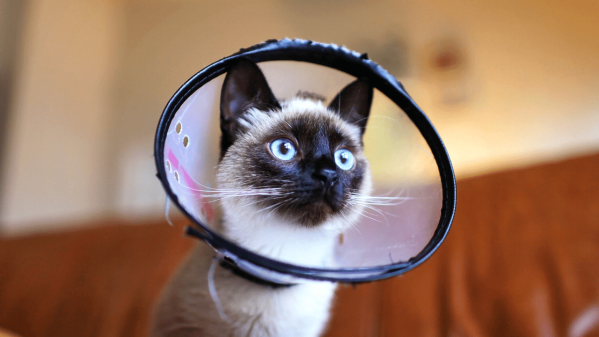As much as you love your furry friend, the unfortunate reality is that there are millions of cats and kittens in this world that never find a proper home. As shelters continue to deal with overcrowding, one practical solution to keeping overpopulation at bay (and all kitties in warm, loving homes) is to spay or neuter your cat.
Spaying or neutering is an easy way for pet owners to feel good about letting their cats socialize with other cats or roam in the backyard or neighborhood without worry. But there are so many myths and rumors surrounding the incredibly routine surgery. In fact, the ASPCA and Humane Society actively recommend it for both pet and community cats. To find out more about when you should spay/neuter your cat, what to expect post-surgery, and more, Pawp caught up with Dr. Rachel Mar, veterinarian and blogger at The Vitality Vet who breaks it all down.
What is spaying or neutering a cat? What's the difference?
Spaying and neutering are essentially the same thing (removing a cat’s ability to reproduce), but spaying refers to female cats and neutering refers to male cats.
When should a cat be spayed or neutered?
Most vets recommend spaying or neutering a cat before they reach 5 months of age. Why? Younger cats will be able to heal from the surgery faster and most cats are feeling back to their usual selves within a week.
Spaying/neutering earlier in a cat’s life also lowers its risk for future health issues, such as mammary tumors. Although there are no proven additional risks to spaying/neutering a cat who’s older in age, it’s better to do it while the cat is younger to avoid unnecessary health problems down the line. Spaying/neutering has also been shown to increase a cat’s life expectancy.
How does spaying a cat work?
“Specifically, spaying is when a female cat has a ovariohysterectomy, when the entire uterus and ovaries are removed from the body,” explains Dr. Mar. “They can also be considered spayed with just an ovariectomy, when solely the ovaries and uterine horns are removed, but the uterus itself remains. The latter is less commonly performed and not generally advised,” she says.
How does neutering a cat work?
Neutering a male cat is also referred to as castration; both testicles are removed in the neutering of a male cat. By removing the cat’s reproductive organs, they can no longer fertilize or produce kittens.
Should you spay or neuter your cat?
Animal rights groups and vets agree that you should spay/neuter your cat. “Both procedures are highly recommended for pets, and are even performed in stray animals in order to reduce overpopulation and prevent unwanted breeding,” explains Dr. Mar.
How much does spaying/neutering a cat cost?
At a private veterinarian, spaying/neutering a cat can cost you anywhere between $200-$800. Though, neutering is generally more affordable than spaying. However, there are many organizations and charities that offer free or no-cost spaying/neutering services. It’s pretty easy to find organizations willing to do it for around $10-$50.
Do spayed/neutered cats still go into heat?
No. Since ovaries produce estrogen and ovaries are removed in the spaying process, a female cat cannot go into heat after being spayed. Neutered male cats may still be able to go into heat and even impregnate a female cat up to six weeks after their surgery, so it’s important to keep them away from other cats until they are completely healed. After it’s healed, a male cat cannot go into heat after neutering surgery.
Read More: Everything To Know About Cat Pregnancy
How long does it take a cat to recover from spaying/neutering?
Dr. Mar points out that animals are incredibly resilient and cats are no different. “The first 24-48 hours your cat may be a bit painful and tired, which is expected after any surgery,” she explains. “However, pets are given pain medications before or during surgery in order to ensure your pet is not in pain when they wake up.” The pain medicine is generally taken for three to five days after the surgery. Neutered cats will recover much faster because removing an external organ such as the testicles does not open up the abdominal cavity and require stitching the way it’s done with spaying.
How to care for your cat after they've been spayed/neutered
Although cats will feel better a day or two after surgery, owners will still need to make sure their cat is limiting their activity, as not to rupture or strain the recent sutures. “This is one reason why an e-collar (“cone”) is required in cats after they're spayed/neutered,” explains Dr. Mar.
The main aftercare is ensuring your pet is comfortable and pain medication is given if needed, the collar is kept on, and your cat’s activity is restricted in order for them to heal quickly and smoothly.
